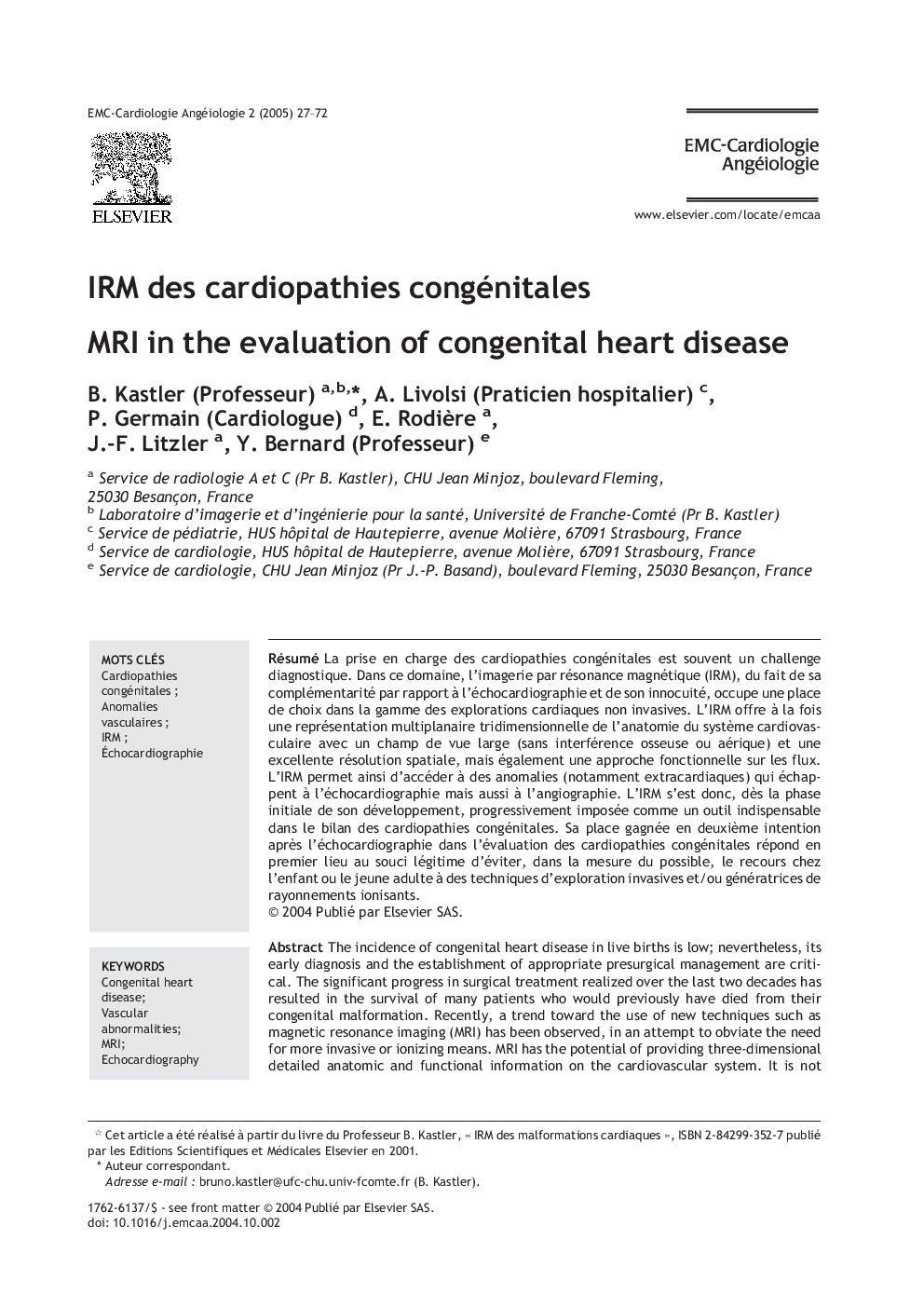| Article ID | Journal | Published Year | Pages | File Type |
|---|---|---|---|---|
| 9167432 | EMC - Cardiologie-Angéiologie | 2005 | 46 Pages |
Abstract
The incidence of congenital heart disease in live births is low; nevertheless, its early diagnosis and the establishment of appropriate presurgical management are critical. The significant progress in surgical treatment realized over the last two decades has resulted in the survival of many patients who would previously have died from their congenital malformation. Recently, a trend toward the use of new techniques such as magnetic resonance imaging (MRI) has been observed, in an attempt to obviate the need for more invasive or ionizing means. MRI has the potential of providing three-dimensional detailed anatomic and functional information on the cardiovascular system. It is not limited by intervening gas or bones, and provides a large view. Thus MRI clearly emerged as an excellent imaging modality complementary to sonography both during the preoperative and during the postoperative management. MRI bridges the gap between echocardiography and angiography, and consequently diagnostic angiographic procedures have become unnecessary. Indeed angiography has drawbacks; it is risky and invasive, exposes to radiation hazards and requires deeper sedation which is deleterious especially in evaluating a pediatric population.
Keywords
Related Topics
Health Sciences
Medicine and Dentistry
Cardiology and Cardiovascular Medicine
Authors
B. (Professeur), A. (Praticien hospitalier), P. (Cardiologue), E. Rodière, J.-F. Litzler, Y. (Professeur),
